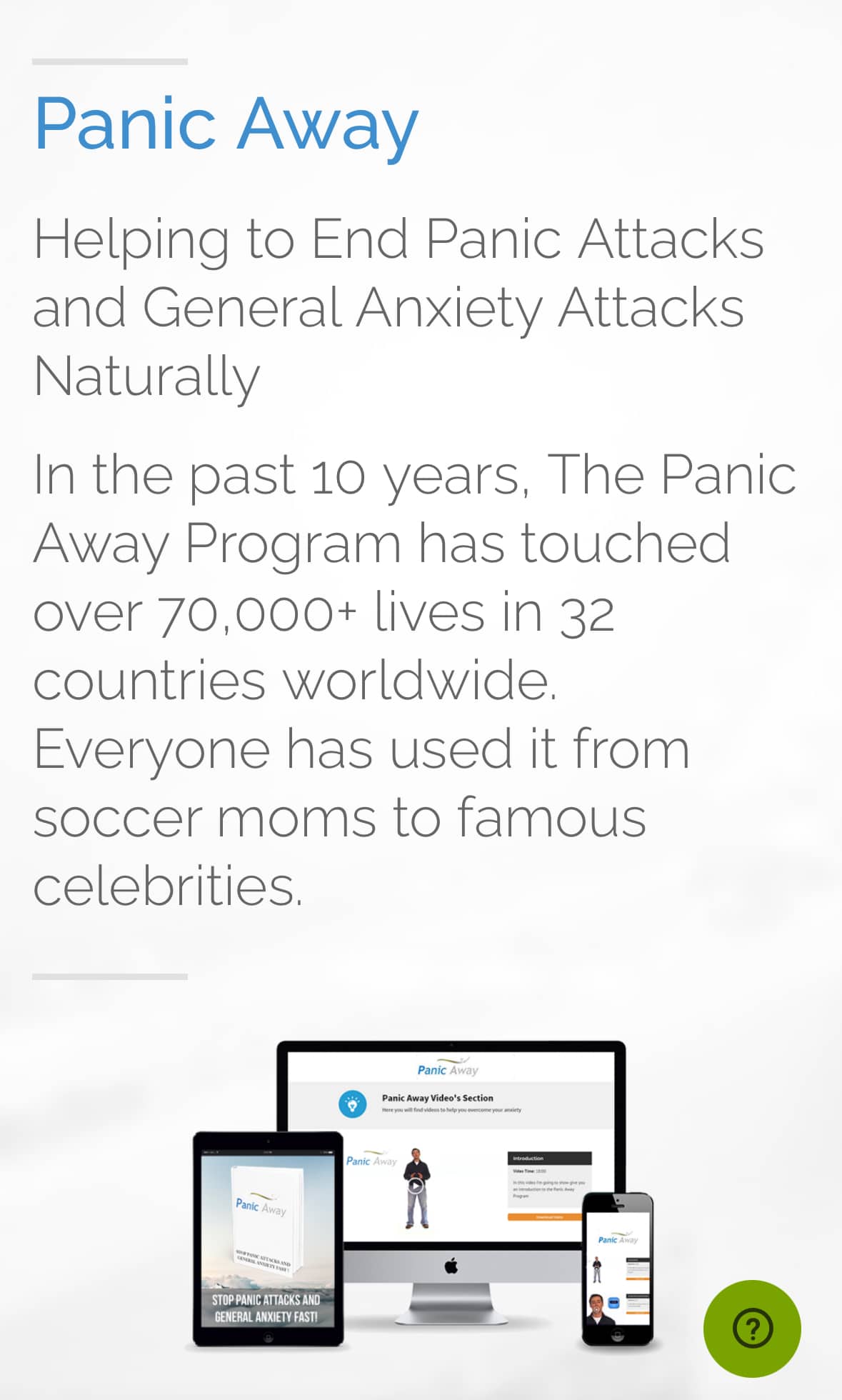OCD and Comorbid Disorders

In the complex realm of mental health, obsessive-compulsive disorder (OCD) stands out as a unique and often debilitating condition. However, it rarely exists in isolation. More frequently than not, OCD intertwines with other mental health disorders, forming a web of comorbidities that can pose unique challenges for individuals and clinicians alike.
Mental disorders are usually intertwined with each other. Although they certainly share differences, the similarities by far outweigh them. Definitely, there is a relationship between OCD and comorbid disorders. In fact, studies show that 90% of people diagnosed with OCD also have other comorbid diseases.
The majority of comorbid diseases linked with OCD are anxiety disorders with a whopping (76%) followed by mood disorders (63%). Keep in mind severity of OCD symptoms could differentiate the development of certain comorbid diseases.
In this article, we delve into the intricate relationship between OCD comorbid disorders, shedding light on the interconnectedness of these conditions, their impact on one another, and the strategies for effective diagnosis and treatment. Join us on a journey to better understand the complexities of OCD in its broader mental health context.
This post is centered around The Relationship Between OCD and Comorbid Disorders.

Ready to reclaim your life, one fearless step at a time? Your personalized path to anxiety-free living starts now!
Unlock your extraordinary future with PanicAway!
Don’t let anxiety define your story. Choose PanicAway, and step into a world bursting with limitless opportunities and unshakable self-assurance. Your personalized path to an extraordinary life is right here!
Meet PanicAway: Your Personal Roadmap to Liberation from Anxiety
Tired of letting anxiety steal the best moments of your life? It’s time to take charge and embrace a world filled with possibilities, free from fear and panic.
Why PanicAway is Your Perfect Ally in this Journey:
- Immediate Relief: Imagine those sleepless nights and crippling panic attacks becoming distant memories. PanicAway arms you with techniques for instant anxiety relief, putting you back in control.
- Empowerment from Within: It’s not about just managing anxiety; it’s about conquering it at its core. Rediscover your inner strength and emerge as a fearless, empowered version of yourself.
- Reclaim Your Freedom: Visualize a life where anxiety no longer dictates your choices. With PanicAway, you’ll savor the freedom to chase your dreams, explore the world, and seize every opportunity with unwavering confidence.
- Proven Success Stories: Join the community of individuals who’ve transformed their lives with PanicAway. You can be the next success story, and we can’t wait to celebrate your triumph!
- Comprehensive Support: You gain access to a treasure trove of resources, from life-changing e-books to enlightening audio guides. Plus, connect with kindred spirits on their own journeys to overcome anxiety.
What Are Comorbid Disorders?
Comorbid disorders, sometimes referred to as comorbidity or co-occurring disorders, represent a frequent and intricate aspect of mental health. They occur when an individual experiences two or more different psychiatric conditions simultaneously. This phenomenon is not exclusive to any particular group or disorder but can manifest in various combinations.
For instance, someone with obsessive-compulsive disorder (OCD) may also suffer from comorbid anxiety disorders, such as generalized anxiety disorder, tic disorders, Attention Deficit Hyperactivity Disorder (ADHD) disorders, depressive disorders or panic disorder.
Similarly, individuals with depression may find themselves grappling with substance use disorders. These combinations are not coincidental; they often share underlying risk factors and biological mechanisms.
In this article, we will explore the various aspects of comorbid disorders, including their prevalence, potential causes, and the implications they carry for both individuals and the mental health care system.
OCD And Major Depression Disorder

Obsessive-Compulsive Disorder and Major Depressive Disorder (MDD) are two distinct yet often comorbid severe mental illness conditions. When these conditions co-occur, they can significantly impact an individual’s well-being and treatment approach.
Here’s a closer look at the comorbidity of OCD and MDD:
Prevalence
The co-occurrence of OCD and MDD is relatively common. Studies have shown that a substantial number of individuals with OCD will experience at least one episode of major depression in their lifetime, and vice versa.
Despite being different mental disorder(s), OCD and MDD can share some common symptoms, such as persistent negative thoughts, irritability, and disruptions in sleep and appetite. This overlap can sometimes make it challenging to differentiate between the two conditions.
Impact
When OCD and MDD co-occur, their combined impact on an individual’s life can be particularly debilitating. The obsessions and compulsions of OCD can intensify during depressive episodes, making it even harder for the person to function in their daily life.
Treatment Challenges
Comorbid OCD and MDD require careful assessment and treatment planning. Treating one condition without addressing the other may lead to limited success.
Cognitive-behavioral therapy (CBT), particularly exposure and response prevention (ERP), is often used to treat OCD, while MDD may be treated with psychotherapy, medication, or a combination of both. The choice of treatment depends on the severity of each condition and the individual’s response.
Prognosis
While comorbidity can complicate treatment, it’s essential to recognize that individuals with OCD and MDD can still achieve significant improvements in their mental health with appropriate interventions. Timely diagnosis and comprehensive treatment that addresses both disorders are key to improving the overall quality of life for those affected.
In summary, the comorbidity of OCD and Major Depressive Disorder presents a unique set of challenges for both individuals and mental health professionals.
However, with proper assessment and a tailored treatment plan, many individuals can find relief from their symptoms and regain control over their lives.
Related Article(s) – Is OCD a Form of Depression?
OCD And Anxiety Related Disorders

Obsessive-Compulsive Disorder frequently coexists with various anxiety-related disorders, creating a complex clinical picture. This comorbidity highlights the intricate relationship between OCD and anxiety disorder.
Here are some key aspects to consider:
High Comorbidity Rates
OCD commonly occurs alongside anxiety disorder(s), including generalized anxiety disorder (GAD), panic disorder, social anxiety disorder (SAD), and specific phobias. Studies have shown that individuals with OCD are at a higher risk of developing comorbid anxiety disorder(s).
OCD and anxiety disorder(s) share several features, such as excessive worry, panic attacks, fear, and avoidance behaviors. The obsessions and compulsions seen in OCD can be seen as coping mechanisms to manage anxiety or alleviate distressing thoughts. This is very apparent in panic disorder(s)
Symptom Overlap
There is often significant symptom overlap between OCD and panic disorder. For instance, individuals with GAD may experience excessive panic attacks about a wide range of issues, while OCD patients may have obsessions related to specific themes (e.g., contamination) that lead to anxiety.
Treatment Considerations
When treating Comorbid disorder OCD and anxiety disorder(s), clinicians need to consider the interplay between these conditions.
Cognitive-behavioral therapy (CBT) approaches, such as exposure and response prevention (ERP) for OCD and various CBT techniques for anxiety disorders (panic disorder), can be effective. Medication management may also be part of the treatment plan.
Complexity and Severity
Comorbidity can make these conditions more complex and often results in increased symptom severity and functional impairment. Individuals with both OCD and anxiety disorders may find it more challenging to manage their daily lives and may experience a higher level of distress and frequent panic attacks.
In summary, the comorbidity of OCD and anxiety-related disorders underscores the intricate nature of these conditions and the need for comprehensive assessment and treatment.
With the right interventions, individuals (OCD patients) living with these comorbidities can experience significant improvements in their quality of life and reduction in their symptoms.
Related Articles – Depersonalization and OCD
OCD And Post – Traumatic Stress Disorder

The coexistence of Obsessive-Compulsive Disorder and Post-Traumatic Stress Disorder (PTSD) represents a challenging and often complex comorbidity. When these two conditions occur together, they can significantly affect an individual’s mental well-being and daily life.
Here are some important considerations regarding the comorbidity of OCD and PTSD:
Prevalence
The comorbidity of OCD and PTSD is not uncommon, and research suggests that individuals who have experienced traumatic events may be at a higher risk of developing OCD.
Traumatic experiences can trigger intrusive thoughts and anxiety, which may contribute to the development or exacerbation of OCD symptoms.
Overlap in Symptoms
There can be an overlap in symptoms between OCD and PTSD. For example, both conditions can involve intrusive thoughts, avoidance behaviors, and hypervigilance. However, the content and focus of these symptoms may differ.
OCD often features obsessions related to specific themes (e.g., contamination, harm) and compulsions aimed at reducing distress, while PTSD symptoms are typically linked to a traumatic event.
Complex Presentation
The comorbidity of OCD and PTSD can lead to a more complex clinical presentation. Individuals may struggle with the intrusive thoughts and compulsions characteristic of OCD, alongside flashbacks, nightmares, and emotional numbing associated with PTSD. This complexity can make diagnosis and treatment planning challenging.
Treatment Considerations
Treatment for comorbid OCD and PTSD usually involves a combination of approaches. Cognitive-behavioral therapy (CBT), particularly exposure-based therapies, can be beneficial for both conditions. However, treatment may need to be tailored to address the specific symptoms and triggers of each disorder.
Trauma-Informed Care
Recognizing the role of trauma in the development of OCD is essential. Trauma-informed care acknowledges the impact of past traumatic experiences and incorporates this understanding into treatment strategies.
In conclusion, the comorbidity of OCD and PTSD presents a complex clinical challenge, and individuals dealing with these conditions may experience a higher level of distress and impairment.
However, with comprehensive assessment and tailored treatment plans that address both disorders, many individuals can achieve significant improvements in their overall well-being and quality of life.
Related Article(s) – Is OCD a form of PTSD?
OCD and Personality disorders

Comorbidity between Obsessive-Compulsive Disorder and Personality Disorders is an intricate and relatively common clinical phenomenon.
Here’s an overview, including prevalence, shared features, and treatment considerations:
Prevalence
The comorbidity of OCD and Personality Disorders is relatively common. Specific prevalence rates can vary based on the type of Personality Disorder and the population being studied.
Some studies have shown that Obsessive-Compulsive Personality Disorder (OCPD), a Personality Disorder characterized by perfectionism and a need for control, is more likely to be comorbid with OCD compared to other Personality Disorders.
Common Features of OCD:
- Obsessions: Intrusive, distressing thoughts or mental images that cause anxiety.
- Compulsions: Repetitive behaviors or mental acts aimed at reducing anxiety or preventing a feared event.
Common Features of Personality Disorders:
- Enduring Patterns: Personality Disorders involve chronic, enduring patterns of behavior, cognition, and inner experiences that deviate from cultural expectations.
- Impairment: These patterns lead to distress or impairment in various areas of an individual’s life, including relationships, work, and social functioning.
Comorbidity Challenges
Personality traits associated with certain Personality Disorders can complicate the treatment of OCD. For example, individuals with OCPD traits may be resistant to change or may have difficulty engaging in therapies that challenge their obsessions and compulsions due to their need for control.
Treatment Considerations
Treatment often requires a tailored approach that considers both the OCD symptoms and the underlying Personality Disorder traits.
Cognitive-behavioral therapy (CBT) with exposure and response prevention (ERP) is a common and effective treatment for OCD. In comorbid cases, therapy may need to address the rigidity, perfectionism, or need for control characteristic of Personality Disorders.
Dialectical Behavior Therapy (DBT), commonly used for Borderline Personality Disorder, can be beneficial in addressing emotional dysregulation and self-destructive behaviors often seen in individuals with comorbid OCD and Personality Disorders.
In summary, the comorbidity of OCD and Personality Disorders is not uncommon, and it poses unique challenges in diagnosis and treatment.
A thorough assessment is essential, and an integrated approach to therapy is typically required to address both the OCD symptoms and the enduring patterns of personality traits characteristic of the Personality Disorder.
Related Articles – Moral Absolutism in OCD
OCD And Eating Related Disorders

The comorbidity of Obsessive-Compulsive Disorder and Eating-Related Disorders is an intriguing yet challenging aspect of mental health. When these conditions coexist, they can create a complex clinical picture with various implications.
Here’s an overview of the comorbidity of OCD and Eating Disorders:
Prevalence
Research suggests a higher prevalence of OCD in individuals with eating disorders compared to the general population. Common eating-related disorders that can co-occur with OCD include anorexia nervosa, bulimia nervosa, and binge-eating disorder.
OCD and eating-related disorders can share certain features, particularly related to the presence of obsessions and compulsions.
In eating disorders, obsessions might revolve around body image, food (anorexia nervosa), and weight, while compulsions may manifest as restrictive eating, binge eating, or purging behaviors. These behaviors may serve as coping mechanisms for anxiety and distress.
Complex Presentation
Comorbid OCD and eating-related disorders can create a complex presentation. Individuals may experience obsessions and compulsions related to their eating behaviors, body image, and appearance. The rituals associated with OCD may overlap with or exacerbate the eating disorder symptoms.
Treatment Challenges
The presence of both OCD and an eating-related disorder can pose treatment challenges. Therapists need to address both the obsessions and compulsions of OCD and the disordered eating behaviors.
Treatment approaches may involve cognitive-behavioral therapy (CBT) for OCD and specialized therapies for eating disorders, such as dialectical behavior therapy (DBT) or cognitive-behavioral therapy for eating disorders (CBT-E).
Medical Considerations
Comorbid eating-related disorders often come with medical complications, such as malnutrition, electrolyte imbalances, and gastrointestinal issues. These medical concerns need to be addressed alongside the mental health treatment.
In summary, the comorbidity of OCD and Eating-Related Disorders underscores the complexity of these conditions and the need for comprehensive assessment and treatment.
With appropriate interventions, individuals can make significant strides toward improving their overall well-being and relationship with food and body image.
What are you waiting for? Download your FREE OCD Worksheets Now!
OCD And Body Dysmorphic disorder (BDD)

The comorbidity of Obsessive-Compulsive Disorder (OCD) and Body Dysmorphic Disorder (BDD) is a notable clinical occurrence, as both disorders share themes related to appearance, obsession, and compulsive behaviors.
Here’s an overview, including prevalence, shared features, and treatment considerations:
Prevalence
The comorbidity of OCD and Body Dysmorphic Disorder is relatively common. Some studies have reported that a significant proportion of individuals with BDD also meet the criteria for OCD or experience OCD-like symptoms.
Common Features of OCD:
- Obsessions: Intrusive, distressing thoughts, images, or urges that cause significant anxiety or discomfort.
- Compulsions: Repetitive behaviors or mental acts aimed at reducing the distress associated with the obsessions.
Common Features of Body Dysmorphic Disorder:
- Preoccupation with Appearance: Individuals with BDD are excessively concerned about perceived flaws or defects in their physical appearance. These concerns are often exaggerated or imagined.
- Avoidance Behaviors: Like in OCD, individuals with BDD may engage in avoidance behaviors, such as avoiding mirrors, excessive grooming, or seeking reassurance from others.
Comorbidity Challenges
The comorbidity of OCD and BDD can present challenges in distinguishing between the two disorders, as their obsessions and compulsions often overlap.
The presence of both disorders can result in increased symptom severity, distress, and impairment in daily functioning.
Treatment Considerations
Treatment for comorbid OCD and BDD requires a comprehensive approach. Cognitive-behavioral therapy (CBT) with exposure and response prevention (ERP) is effective in addressing the shared compulsive behaviors and can be adapted to target both the obsessions related to appearance in BDD and the broader obsessions in OCD.
Medication, particularly selective serotonin reuptake inhibitors (SSRIs), may be used in the treatment of both OCD and BDD.
Clinicians must be skilled in distinguishing between the distinct features of each disorder to ensure a tailored treatment approach.
In summary, the comorbidity of OCD and Body Dysmorphic Disorder is a common and complex clinical phenomenon, often marked by shared themes of obsession, anxiety, and compulsive behaviors related to appearance.
Tailored assessment and treatment plans are essential to address the specific symptoms of each disorder and the overall complexity of the comorbidity.
Related Articles – Alcohol Makes OCD Worse: Is There Really a Connection?
OCD And Bipolar Disorder

The comorbidity of Obsessive-Compulsive Disorder and Bipolar Disorder presents a complex clinical scenario, as it involves the interaction of mood disturbances and anxiety-related symptoms.
Here’s an overview, including prevalence, shared features, and treatment considerations:
Prevalence
The comorbidity of OCD and Bipolar Disorder is relatively common, with some studies reporting higher rates of comorbidity between these two conditions compared to the general population.
Common Features of OCD:
- Obsessions: Intrusive, distressing thoughts or mental images that cause significant anxiety.
- Compulsions: Repetitive behaviors or mental acts aimed at reducing the anxiety or discomfort associated with the obsessions.
Common Features of Bipolar Disorder:
- Mood Episodes: Bipolar Disorder is characterized by mood episodes (mood disorders) that can include manic or hypomanic episodes (elevated mood, impulsivity) and depressive episodes (persistent sadness, low energy).
- Fluctuating Mood: Individuals with Bipolar Disorder experience fluctuations between these mood states.
Comorbidity Challenges
The presence of both OCD and Bipolar Disorder can complicate diagnosis and treatment, as the symptoms of OCD may interact with the mood disturbances of Bipolar Personality Disorder.
Treatment Considerations
The treatment for comorbid OCD and Bipolar Personality Disorder requires a tailored approach. Cognitive-behavioral therapy (CBT) with exposure and response prevention (ERP) is often effective in treating OCD. However, during manic or hypomanic phases, individuals with Bipolar Personality Disorder may not respond well to exposure-based therapies.
Medication management is often necessary to address the mood disturbances in Bipolar Personality Disorder and may include mood stabilizers, antipsychotics, and antidepressants.
Careful monitoring of the use of antidepressants is essential, as they can potentially trigger manic or hypomanic episodes in individuals with Bipolar Personality Disorder.
In summary, the comorbidity of OCD and Bipolar Disorder is relatively common and presents a complex challenge. A thorough assessment is vital, and an integrated approach to therapy is typically required to address both the OCD symptoms and the mood fluctuations characteristic of Bipolar Disorder.
Related Articles – PANDAS Syndrome Hoax? Here’s What to Know

Ready to reclaim your life, one fearless step at a time? Your personalized path to anxiety-free living starts now!
Unlock your extraordinary future with PanicAway!
Don’t let anxiety define your story. Choose PanicAway, and step into a world bursting with limitless opportunities and unshakable self-assurance. Your personalized path to an extraordinary life is right here!
Meet PanicAway: Your Personal Roadmap to Liberation from Anxiety
Tired of letting anxiety steal the best moments of your life? It’s time to take charge and embrace a world filled with possibilities, free from fear and panic.
Why PanicAway is Your Perfect Ally in this Journey:
- Immediate Relief: Imagine those sleepless nights and crippling panic attacks becoming distant memories. PanicAway arms you with techniques for instant anxiety relief, putting you back in control.
- Empowerment from Within: It’s not about just managing anxiety; it’s about conquering it at its core. Rediscover your inner strength and emerge as a fearless, empowered version of yourself.
- Reclaim Your Freedom: Visualize a life where anxiety no longer dictates your choices. With PanicAway, you’ll savor the freedom to chase your dreams, explore the world, and seize every opportunity with unwavering confidence.
- Proven Success Stories: Join the community of individuals who’ve transformed their lives with PanicAway. You can be the next success story, and we can’t wait to celebrate your triumph!
- Comprehensive Support: You gain access to a treasure trove of resources, from life-changing e-books to enlightening audio guides. Plus, connect with kindred spirits on their own journeys to overcome anxiety.
Final Thoughts on OCD and Comorbid Disorders
In summary, the connection between Obsessive-Compulsive Disorder (OCD) and other mental health issues is like a puzzle where different conditions often go hand in hand. This means that when someone has OCD, they often also have something else, like anxiety or mood problems.
This article has shown us that treating these conditions isn’t one-size-fits-all. It’s a bit like finding the right key for the right lock; we need to understand each person’s unique challenges and give them personalized help.
By knowing the common features, how often these conditions happen together, and how to treat them, we’re better equipped to help people who are dealing with more than one mental health issue. This knowledge reminds us that there’s hope and help for those facing these challenges, and that we’re learning more every day to support them on their journey to better mental well-being.

